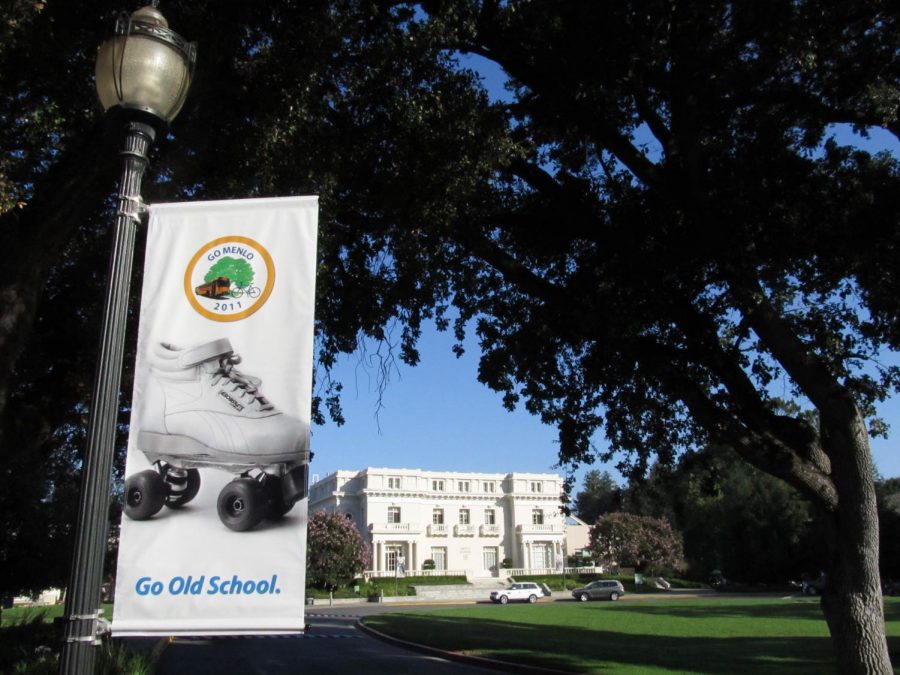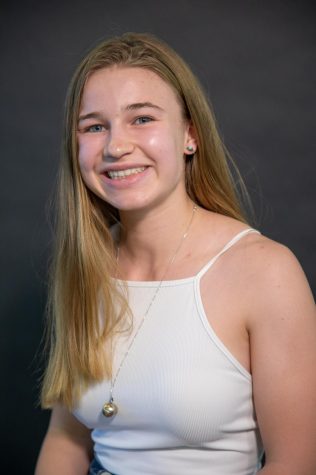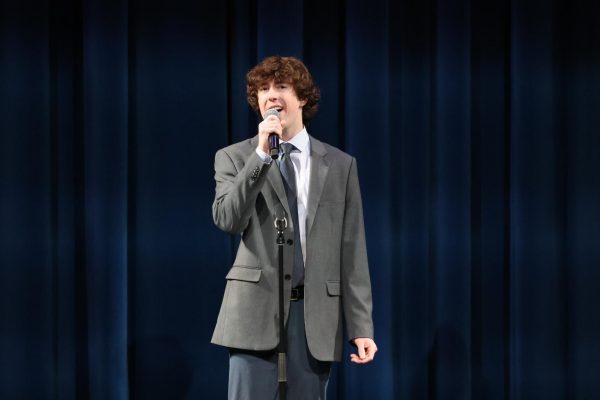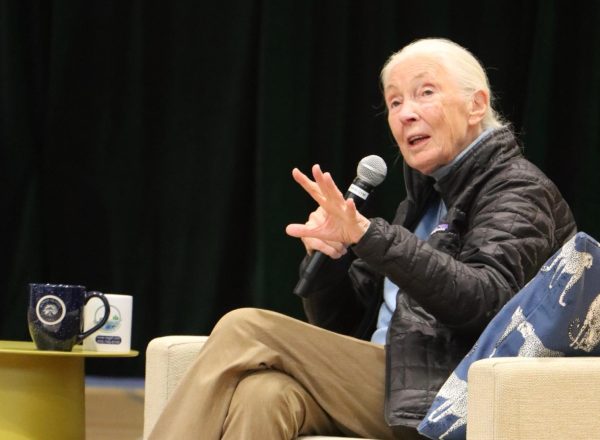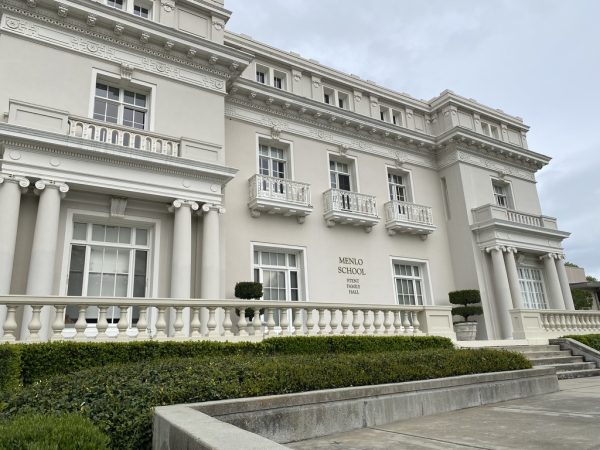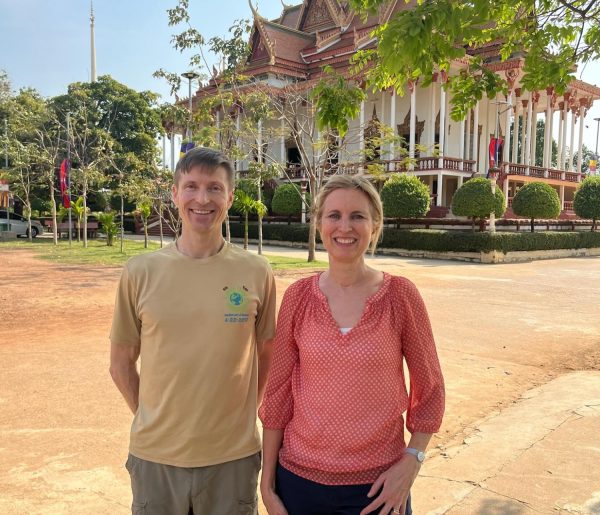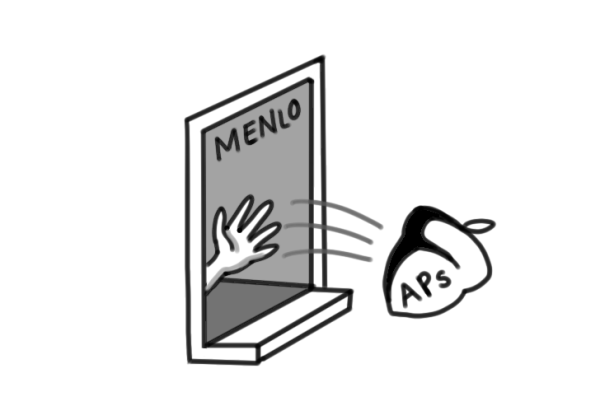Menlo Nears Traffic Limit, Threatening Drop in Student Enrollment
A poster hangs at the entrance to Menlo School in 2011, promoting the then-newly-founded GO MENLO program. GO MENLO promotes ways to reduce the number of drivers on Menlo’s campus, such as roller skating or taking the bus. Photo courtesy of Pete Zivkov.
October 29, 2019
The number of trips taken by cars in and out of Menlo School is nearing the limit posed by Menlo School’s Conditional Use Permit from the Town of Atherton, according to Director of Sustainability Kevin Conner. If the average number of trips is not below the limit by the end of the 2019-2020 school year, Menlo’s future enrollment will have to decrease by 45 students, according to Head of School Than Healy.
In 2011, Menlo School made an agreement (Conditional Use Permit No. CUP15-00003) with the Town of Atherton that the school would have a maximum of 711 trips to and from the school during peak morning hours, and 302 trips in the afternoon in return for the school increasing total enrollment across grades 6-12 from 750 students to 795 students, according to Atherton Deputy City Manager and Deputy Clerk Anthony Suber. The number of trips was changed to 627 trips in the mornings and 453 trips in the afternoon in 2012, according to Suber.
For the 2018-2019 school year, there was an average of 622 trips in the mornings, and this year the current average number of trips is 617, according to Conner.
The Conditional Use permit also mandates that no more than 86.5% of the parking capacity for faculty, students and staff be used in order to limit the number of cars driving to and from campus each day according to Menlo School’s 2019 Master Plan Update., wherein Menlo School’s planning consultant, Neal Martin, disclosed the school’s 2019 annual update on the school’s transportation management.
While initially, the town had a consultant who counted the number of cars coming in and out of campus, automatic monitors have now been installed underneath the pavement at the school’s entrance that count the number of trips made, according to Conner. Each time a car drives either in or out of Menlo, a trip is counted, so a car driving into the school to drop off a student and then leaving counts as two trips, according to Conner.
In the mornings, the number of cars coming in and out of Menlo is counted from 7:00 a.m. to 9:00 a.m. Within that window, the hour that had the most amount of trips is the hour that is recorded and figured into the year-long average, according to Conner. Usually, the busiest hour is either from 7:30 a.m. to 8:30 a.m. or from 7:45 a.m. to 8:45 a.m., according to Conner.
Menlo increased their enrollment from 750 students to 795 students during the 2011-2012 school year, adding a slight yet significant delay to the intersection on Elena Avenue and Valparaiso, which already had an “unacceptable” delay, according to Menlo School’s 2013 Master Plan Update. This combination of an already “unacceptable” delay along with an additional 0.8 second delay results in compounded effects in the traffic flow. This means that there has been a compounded effect of the delays, creating heavy traffic while crossing the Elena Avenue and Valparaiso intersection.
“I have heard from other administration, staff members, that [the additional traffic] is a hot topic among neighbors; that they want to able able to go down the street in a reasonable amount of time in the morning,” Conner said.
Part of the Conditional Use Permit was that Menlo implements a Transportation Demand Management program (named the “GO MENLO” Transportation Plan) and hires a Transportation Demand Management program director — Conner — according to Suber. Go Menlo includes incentives to reduce the number of trips, including carpools, buses, train shuttles, and events, according to the Menlo School Conditional Use Permit No. CUP15-00003 and Variance No. VAR15-00007—Central Campus Project.
Treats were given out and students were entered into a raffle to potentially win a prize for students who take the bus, use public transportation, ride their bikes, walk, or carpool to school on Friday, Oct. 18, with both the upper school and the middle school having an assembly about GO MENLO on Oct. 18.
If the average amount of trips for the 2019-2020 school year exceeds the maximums stated by the Conditional Use Permit No. CUP15-00003, Menlo School’s current enrollment would have to drop by 45 students, Healy. The decrease in student enrollment would happen through admitting fewer students rather than not allowing current students to return to Menlo, according to Healy.
“[Losing 45 students would affect Menlo’s culture in the sense that if] we pull out the Knightbook and choose 45 names at random, and then we look at the faces and the names of people who would not have gone here if we just had that 750 person cap,” Healy said. “You can’t know who wouldn’t have been able to go here, but I know that it would be a different school.”
Each Menlo student’s tuition is around $49,110 each year, according to the Menlo School Website, so through losing 45 potential students, approximately 2 million dollars would be lost in school funding after taking into account that some students receive partial or full financial aid, according to Healy. In addition, fewer teachers would be needed at the school, forcing some teachers to lose their jobs, according to Healy.
If the average number of trips is over the limit at the end of the year, the number of students at Menlo would have to decrease to 750 students by the beginning of the school year three years from the school year that the limit was surpassed. according to Menlo School’s 2013 Master Plan Update. At least 25% of that reduction would have to take place by the start of the next school year following the violation of the limit, followed by 40% of the reduction by the end of the second school year, according to Menlo School’s 2013 Master Plan Update.
However, if Menlo does manage to significantly decrease the number of trips to and from Menlo, there is a potential for adding three to eight more students in each grade level, according to Healy. “We have so many kids that we turn away every single year, that I would love the opportunity to accept just a few more,” Healy said.
By decreasing the number of car trips in and out of Menlo, there would be a positive impact not only for the school but for the environment as well, according to Healy. “It wouldn’t be hard, if, for instance, we had 20 fewer cars come to our front gate in the morning. We would clear our number by so much that we wouldn’t be in this position,” Healy said. “When you think about reducing the overall average, it’s big; 20 fewer cars a day actually doesn’t seem that hard […] and that’s also reducing our carbon footprint in a rather significant way.”


